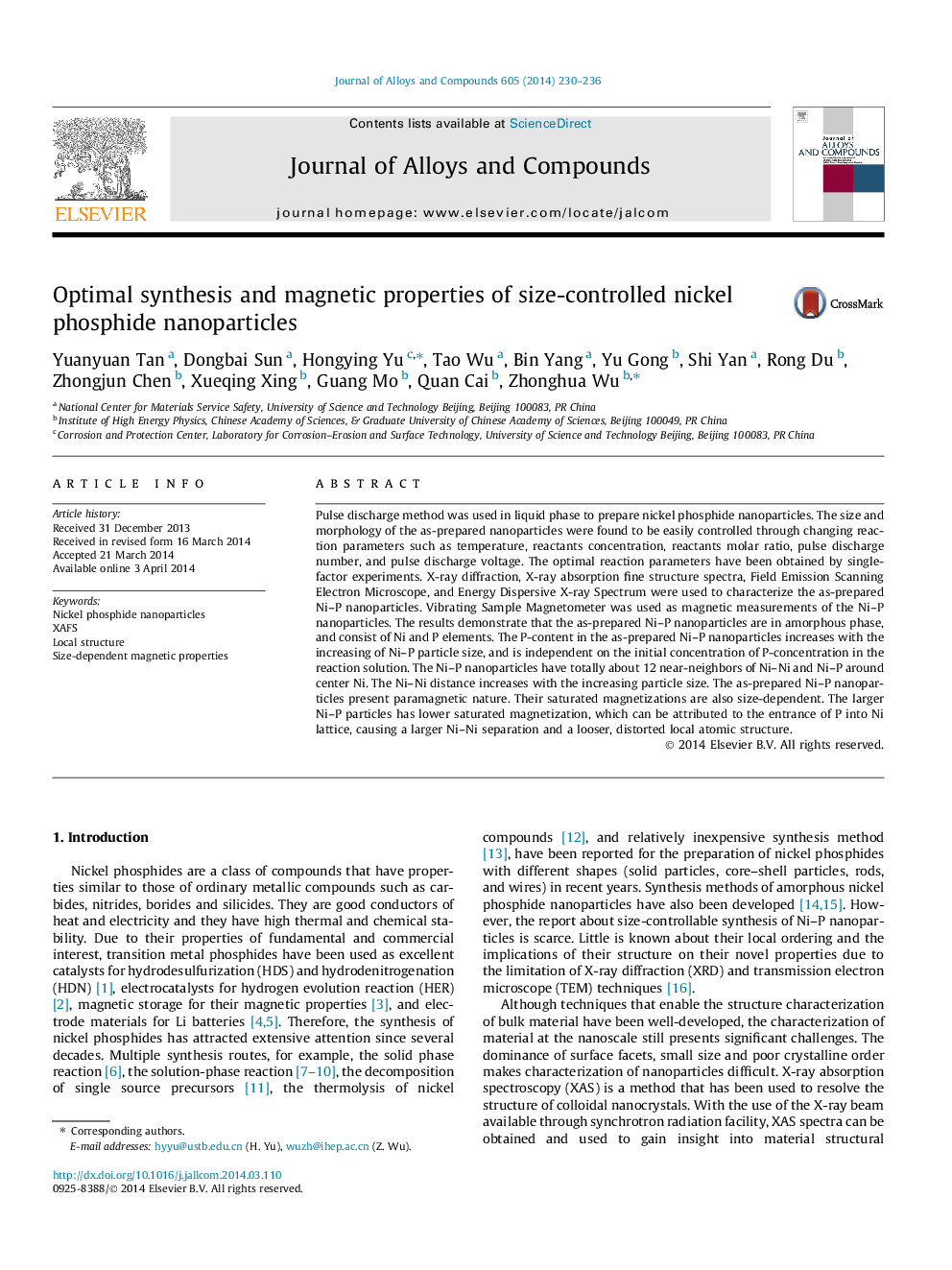| کد مقاله | کد نشریه | سال انتشار | مقاله انگلیسی | نسخه تمام متن |
|---|---|---|---|---|
| 1610982 | 1516288 | 2014 | 7 صفحه PDF | دانلود رایگان |
• A pulse discharge method was used to synthesize noncrystalline Ni-P nanoparticles.
• Size controlled nanoparticles were prepared through adjustment of reaction parameters.
• Local structures both centered around Ni and P atoms were investigated including coordinated atoms and bondlengths.
• Magnetic properties of the nickel phosphide nanoparticles are found to be ferromagnetic and size-dependent.
Pulse discharge method was used in liquid phase to prepare nickel phosphide nanoparticles. The size and morphology of the as-prepared nanoparticles were found to be easily controlled through changing reaction parameters such as temperature, reactants concentration, reactants molar ratio, pulse discharge number, and pulse discharge voltage. The optimal reaction parameters have been obtained by single-factor experiments. X-ray diffraction, X-ray absorption fine structure spectra, Field Emission Scanning Electron Microscope, and Energy Dispersive X-ray Spectrum were used to characterize the as-prepared Ni–P nanoparticles. Vibrating Sample Magnetometer was used as magnetic measurements of the Ni–P nanoparticles. The results demonstrate that the as-prepared Ni–P nanoparticles are in amorphous phase, and consist of Ni and P elements. The P-content in the as-prepared Ni–P nanoparticles increases with the increasing of Ni–P particle size, and is independent on the initial concentration of P-concentration in the reaction solution. The Ni–P nanoparticles have totally about 12 near-neighbors of Ni–Ni and Ni–P around center Ni. The Ni–Ni distance increases with the increasing particle size. The as-prepared Ni–P nanoparticles present paramagnetic nature. Their saturated magnetizations are also size-dependent. The larger Ni–P particles has lower saturated magnetization, which can be attributed to the entrance of P into Ni lattice, causing a larger Ni–Ni separation and a looser, distorted local atomic structure.
Journal: Journal of Alloys and Compounds - Volume 605, 25 August 2014, Pages 230–236
